What Types of Voices There Are
Music takes up a good part of our lives. Some enjoy simply listening to it while others choose to become professional musicians, composers, or singers. It is very important for them to know what type of voice they have. Singing voices differ and are classified into the Fach system. In this article, 5-Minute Crafts will show you the most relevant types of voices that exist.
What a voice type is

The type of voice refers to the singing voice that has certain characteristics and qualities. These characteristics apply to the vocal range, vocal weight, tessitura, vocal timbre, and vocal transition points, such as breaks and lifts within the voice.
Vocal range is the range of notes that a voice can reach or produce sound, and tessitura is the range of the voice where the singer can sing most comfortably. While vocal timbre represents the quality given to a sound by its overtones, it is that unique something that gives color and personality to your voice and how it is recognized. Many singers belong between groups so they can perform some parts in either type.
What scientific pitch notation is
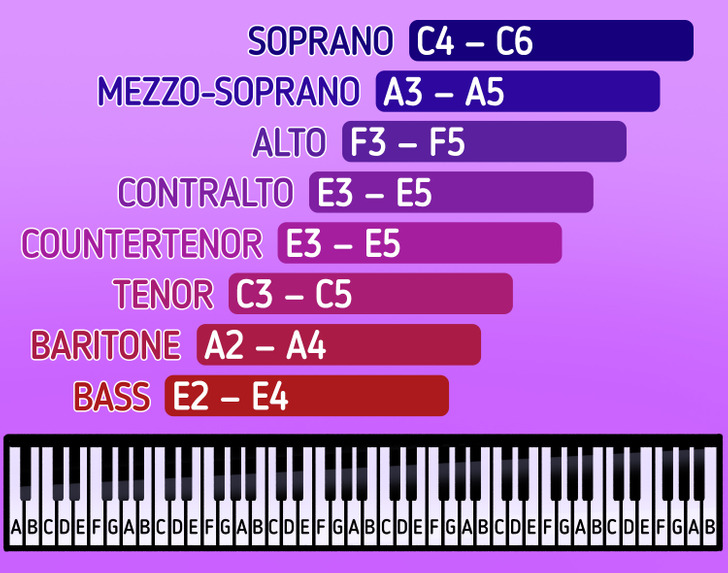
Scientific pitch notation labels pitch with a combination of a letter from the musical alphabet and a number representing an octave. These pitches all have very specific fundamental frequencies measured in Hertz that are associated with them, so there’s no ambiguity. For example, A4 is always 440 Hz, and C4 (middle C) is always 261.626 Hz. In scientific pitch notation, each octave is assigned a number of its own, and each octave begins with a C note and ends with a B note. For example, starting with C4 (middle C), the notes above it are D4, E4, F4, G4, A4, and B4, plus all the sharps and flats in between. When you get to the next C, that’s the beginning of another octave, C5. The note just below C4 is the B note, but it is in a different octave that starts with C3. These notations can be found in the tessitura when determining where the singer can sing most comfortably.
Note: The pitch is a position of a single sound in the complete range of sound, where the octave is an interval whose higher note has a sound-wave frequency of vibration twice that of its lower note.
A. Female voices
1. Soprano
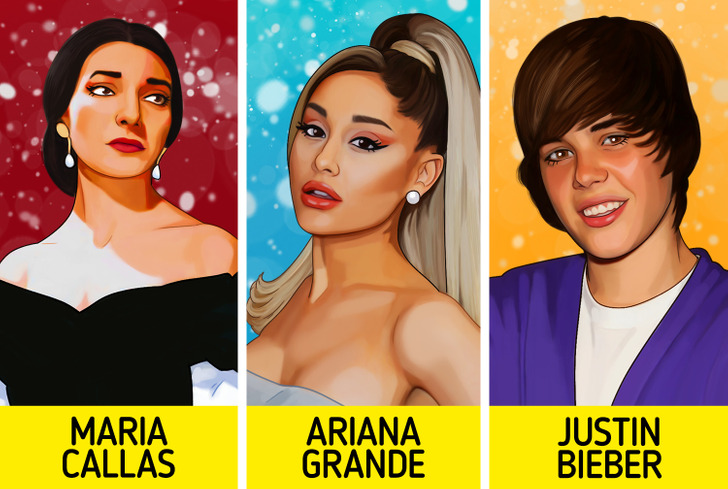
This is the highest female voice. The name soprano comes from the Italian word, “sopra,” which means “above.” Tone range, or tessitura, mostly goes from C4 to C6. And their timbre usually sounds brighter than the other voice types. But they are also capable of tremendous depth and richness of tone.
Note: Apart from women, young boys can also belong to this category. These boy sopranos are also called trebles. A treble has a frequency of about 2,048, and it increases to about 16,384 Hz (C7—C10). The word treble originated from the Latin word “triplum,” which means “triumph,” and it was used during the thirteenth century.
Famous examples: Maria Callas, Renée Fleming, Judy Collins, Ariana Grande, Mariah Carey, Whitney Houston, a young Justin Bieber (as a treble)
2. Mezzo-soprano
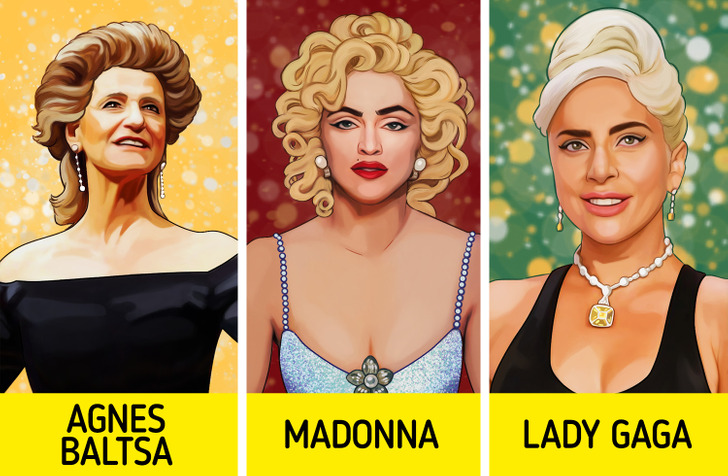
This type of voice is the second-highest female voice. Its tessitura ranges from A3 to A5 with a lighter vocal weight than the alto or contralto. Mezzo-soprano’s name originated from the Italian word, “mezzo,” which means “half.” They can often sing as high as sopranos. What sets them apart is their strong middle voices and their fiery registers, as well as lush tone quality.
Famous examples: Agnes Baltsa, Olga Borodina, Tatiana Troyanos, Madonna, Lady Gaga, Beyoncé
3. Alto

Alto is the second-lowest female vocal range, and they can sing with tessitura from an F3 up to an F5. Their singing of lower notes has more vocal weight than mezzo-soprano and is a little bit less gravelly than contralto.
Famous examples: Lana Del Rey, Tracy Chapman, Amy Winehouse
4. Contralto

This is the lowest female type of voice, and it is very rare. The contralto has the same tessitura as a countertenor, and they will be able to sing from E3 up to E5.
Famous examples: Nina Simone, Annie Lennox
B. Male voices
1. Countertenor

This type of male voice is very rare. The countertenor is the highest male voice type. The range of the tessitura is from E3 up to E5. They have bright, ringing, and very clear voices. They sing the highest notes with ease.
Famous examples: Bruno Mars, Dimash Kudaibergen
2. Tenor
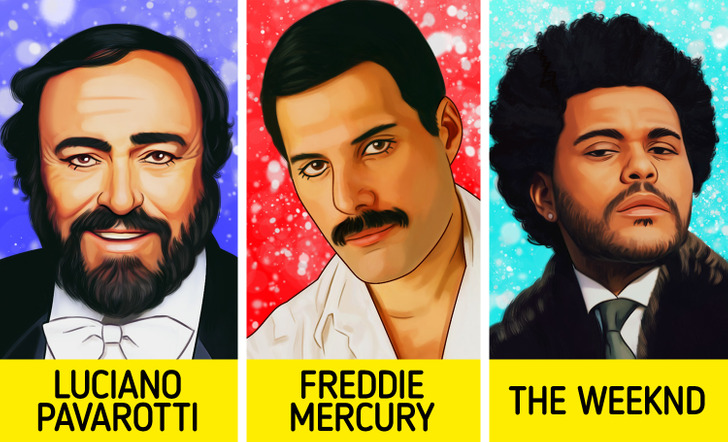
These are the highest male voices, and like sopranos, they can sing breathtaking high notes and often have a brilliant shining timbre. The name comes from the Italian word, “tenere,” which means “to hold.” In very early music, it was their job to hold down the melody and drive the song. Tenors have a tessitura in a comfortable vocal range of a C3 up to a C5.
Famous examples: José Carreras, Enrico Caruso, Franco Corelli, Luciano Pavarotti, Freddie Mercury, Adam Lambert, Jason Mraz, Sam Smith, The Weeknd
3. Baritone
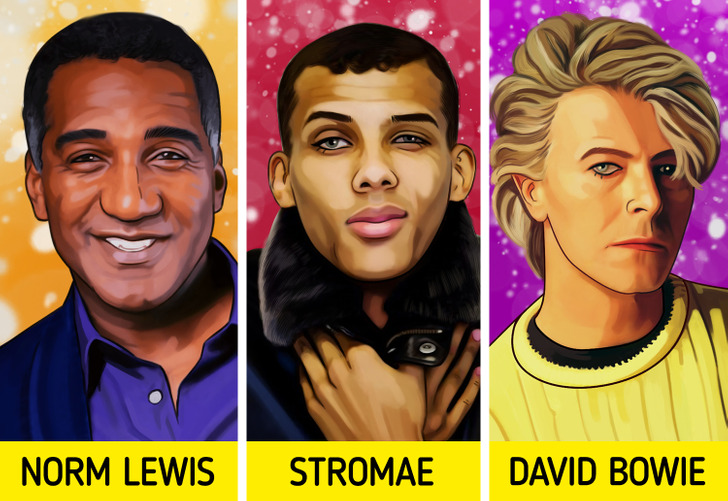
This is the most common of all male voice types, and it’s between tenor and bass. The baritone has some darker tones to the vocal timbre, but they also have some of the higher notes of the tenor. They have a little bit more vocal weight than a tenor’s and a little bit less than a bass does. Baritons have tessitura from an A2 up to an A4.
Famous examples: Norm Lewis, Thomas Hampson, Dmitri Hvorostovsky, John Legend, Hozier, David Bowie, Stromae
4. Bass

The deepest male voice is bass. There are 2 main types of bass:
- Basso cantante, or singing bass
- Basso profondo, or low bass (quite rare)
What makes them so special is not the ability to sing so deeply but the volume and strength with which they can sing them. Tessitura, for most basses, is from the E2 up to an E4.
Famous examples: Boris Christoff, Nicolai Ghiaurov, René Pape, Johnny Cash, Barry White, Leonard Cohen (in older age)